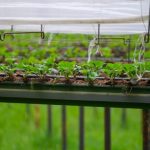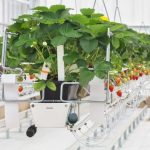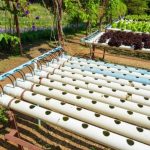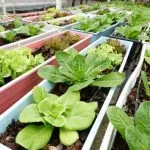In the world of hydroponics, the wick system is one of the simplest and most straightforward methods for growing plants. As you explore various hydroponic systems to start your gardening journey, understanding the wick system pros and cons will give you a better perspective on whether it’s the right choice for your needs. This article will provide an overview of the wick system’s main components and how it works, while delving into its advantages and disadvantages.
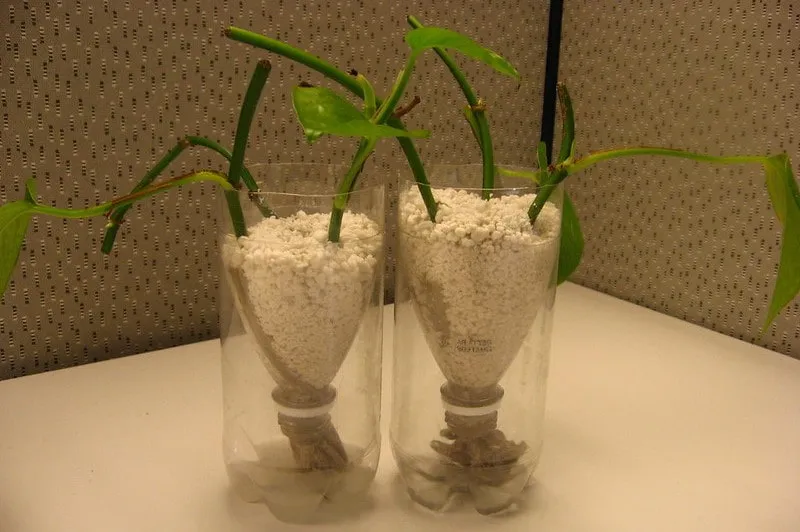
The wick system relies on capillary action to deliver water and nutrients from a reservoir to your plants through wicks. With a grow tray, reservoir, wick, and an optional aeration system as the primary components, this system is easy to set up and maintain. Ideal for low-maintenance plants such as herbs or leafy vegetables, the wick system may be just what you need for a successful hydroponic garden.
However, bear in mind that while the simplicity of the wick system may be advantageous, it’s not without its drawbacks. As you continue reading, you’ll discover the various wick system hydroponics pros and cons, which will better equip you to make an informed decision for your hydroponics project.
Understanding Wick Systems
A wick system is a type of hydroponic system that utilizes wicks to draw nutrients and water from a reservoir to the plants’ roots, thanks to capillary action. This kind of system falls under the category of passive hydroponics and can be a great starting point for beginners due to its simplicity.
In a wick system, there are four primary components: the growing container, reservoir, wicks, and aeration system. The reservoir holds the nutrient solution, and the wicks, usually made of absorbent materials like cotton or felt, connect it to the growing container placed above, where the plants reside. The aeration system, which is optional, oxygenates the water in the reservoir.
The wick material plays an essential role in a wick system; it determines the efficiency of water and nutrient transfer to the plants. The capillary action that drives this process is more effective in some materials than in others, so it’s important to choose the right one for your setup.
How does a wick system work? Get more in-depth information from our comprehensive guide that covers its mechanics as well as how to build a homemade system. Also, consider a wick hydroponic system advantages and disadvantages. Some of the benefits include:
- Simplicity: Wick systems are easy to set up and maintain, making them a great option for beginners.
- Low cost: The components needed for a wick system are relatively inexpensive.
- Low maintenance: With no moving parts, there are fewer elements that can break or malfunction.
On the other hand, there are a few drawbacks to this system:
- Limited scalability: Wick systems may not be suitable for large-scale growing or plants with high nutrient requirements.
- Inconsistent nutrient distribution: The capillary action may not provide even nutrient distribution, which could lead to uneven growth.
- Potential for root rot: If the wick material keeps the grow media too wet, it can create an environment that promotes root rot.
Comparing Wick Systems to Other Hydroponic Methods
Active vs. Passive Systems
Wick systems are considered passive hydroponic systems, meaning they don’t rely on moving parts or pumps. This makes them easier to set up and maintain than active systems. This is also an advantage that the Kratky method has. However, active systems, which include ebb and flow, deep water culture, aeroponics, and aquaponics, often provide better oxygenation and nutrient delivery to the plants, leading to faster growth and higher yields.
Ebb and Flow
Ebb and flow systems, also known as flood and drain, involve periodic flooding of the grow tray with nutrient solution. This allows your plants to receive nutrients and oxygen more efficiently than in a wick system. However, ebb and flow systems require more equipment and setup than wick systems, making them less beginner-friendly.
Deep Water Culture
Deep water culture (DWC) is another hydroponic method, where your plants’ roots are suspended in a nutrient-rich water solution. Air stones provide the roots with oxygen, allowing plants in DWC to grow much faster than in wick systems. However, DWC requires more equipment and can be more difficult to set up, making it slightly less appealing for novice growers.
Aeroponics
Aeroponics is a unique hydroponic method that uses air and mist to deliver nutrients to plant roots. While aeroponics is known for rapid growth and high yields, it requires more equipment, setup, and maintenance compared to wick systems. Moreover, plants grown in aeroponic systems are more susceptible to environmental fluctuations.
Aquaponics
Aquaponics is a combination of hydroponics and aquaculture, utilizing fish waste to provide nutrients for the plants. This method can be more sustainable and environmentally friendly than other hydroponic systems. However, maintaining an aquaponic system can be more complex due to the incorporation of fish and their living requirements.
Wick System Advantages
Simplicity and Low Maintenance
Wick hydroponic systems are known for their simplicity and low maintenance requirements. In this method, the plants are supplied with water and nutrients through wicks. You don’t need to worry about electrical pumps or other complex components. Just set up the reservoir, place the wicks near the plant roots, and let your plants grow. The wick system is easy to maintain because there are no moving parts that would require regular checks or replacements.
Eco-Friendly Components
A significant advantage of the wick system is its environmental friendliness. This gardening method often uses renewable materials like cotton or hemp as wicks. Additionally, you can experiment with recycling or upcycling materials for your growing containers and reservoirs. For example, you can use plastic soda bottles as reservoirs and grow trays instead of throwing them out and you can even cut up and use an old pair of cotton socks to make wicks! Not only does this reduce waste, but it can also save you money on purchasing new equipment.
Beginner-Friendly
If you’re new to hydroponics, a wick system is an excellent choice to start with because of its simplicity and easy setup process. You don’t need any specialized tools or equipment, and the learning curve is minimal. With the proven combination of reservoir, wicks, and plants, even beginners can achieve successful growth without any prior experience in hydroponics. So, if you’re looking to start your hydroponic journey, the wick system can be a friendly and approachable method to get your plants growing strong.
Wick System Disadvantages
Limitations and Drawbacks
One main disadvantage of wick systems is the limited efficiency in terms of moisture and nutrient delivery. Since the system relies on wicks to transfer nutrients, it might not be as efficient as other hydroponic systems that use pumps or aeroponic misters to deliver nutrients directly to the root zone. This can lead to slower growth rates and less productive yields.
Temperature
Temperature can also be a challenge when using a wick system. As the water in your nutrient solution evaporates, it can cause the temperature of the nutrient solution to rise. This can lead to problems with the growth of your plants as they might suffer from heat stress. To avoid this, make sure to monitor the temperature of your nutrient solution and make adjustments as needed to keep it within a suitable range for your plants.
Aeration
In a wick system, the roots of your plants are constantly surrounded by a growing medium that’s soaked in nutrient solution. This can lead to a lack of oxygen, which is essential for proper root growth. To combat this issue, you can incorporate an air stone and air pump to oxygenate the water, but this adds another element of complexity to an otherwise simple system.
Nutrient Build Up Concerns
Nutrient build-up is another potential downside of the wick system. Since the wicks constantly absorb water and nutrients from the reservoir, it’s possible for salts and other nutrients to accumulate in the growing medium. Over time, this can lead to nutrient imbalances and toxic conditions for your plants. Regularly flushing the growing medium and closely monitoring nutrient levels can help mitigate this issue.
In summary, while wick systems offer a simple and beginner-friendly approach to hydroponics, there are several drawbacks that may reduce their effectiveness in comparison to other hydroponic systems. Careful monitoring and maintenance can help address these issues, but it’s important to consider whether a wick system is the right fit for your specific needs and growing goals.

